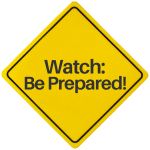Generally, extreme heat is defined as temperatures that hover 10 degrees or more above the average high temperature for the region that last for prolonged periods of time and are accompanied by high humidity that the body cannot tolerate.
See how to determine your risk, prepare your family, learn about your building code, and identify ways to strengthen your home against extreme heat.
Prepare for extreme heat by building a disaster supply kit, and prioritizing drinking water for people and pets. Keep cool air from escaping your home by weatherizing your home’s windows and doors each year. Maintain air conditioning systems.
Plan for a power outage, and consider purchasing a portable or whole-home generator.
When temperatures rise, stay indoors and monitor the weather, following the advice of local authorities. Wear loose, lightweight, light-colored clothing and drink plenty of fluids to stay hydrated.
If air conditioning is not available in your home, go to a cooling center in your community. In the event of a power outage, use generators safely.
After a period of extreme heat, check on family members, seniors, and neighbors. Know the signs of heat-related illness, and understand treatment options.
Inspect your home for damage caused by excessive moisture and humidity. Make all necessary repairs to reduce your health and safety risk during future events.
Please enter a more specific address.

An Excessive Heat Watch is issued when there is a potential for the heat index value to reach or exceed 110 degrees (east of the Blue Ridge) or 105 degrees (west of the Blue Ridge) within the next 24 to 48 hours.

An Excessive Heat Warning is issued when the heat index value is expected to reach or exceed 110 degrees (east of the Blue Ridge) or 105 degrees (west of the Blue Ridge) within the next 12 to 24 hours. An Excessive Heat Warning may be issued for lower criteria if it is early in the season or during a multi-day heat wave.
The Federal Alliance for Safe Homes (FLASH) — a 501(c)(3) nonprofit organization — is the leading consumer advocate for strengthening homes and safeguarding families from natural and manmade disasters.
The Playbook provides proven strategies for all leaders who wish to drive resilience.
This annual conference brings together the nation’s leading voices in disaster safety.
Inspect2Protect will help you understand the building code where you live.
Heat stroke is a severe and life-threatening condition that can occur when the body’s temperature regulation system fails, and body temperature rises to a dangerous level. It is the most severe form of heat-related illness.
During heat stroke, the body cannot regulate its temperature through sweating, leading to a rapid rise in body temperature. This can cause damage to internal organs, particularly the brain, leading to severe complications or even death if left untreated.
Symptoms of heat stroke may include:
Call 911 immediately if you suspect someone is experiencing heat stroke. Take steps to lower the person’s body temperature. This may include moving them to a cool, shaded area, removing excess clothing, and applying cool water or ice packs to the skin.
Hospital-based treatment may include intravenous fluids, medications to lower body temperature, and monitoring for complications such as organ damage.
Early recognition and treatment of heat stroke are crucial to prevent serious complications or death.